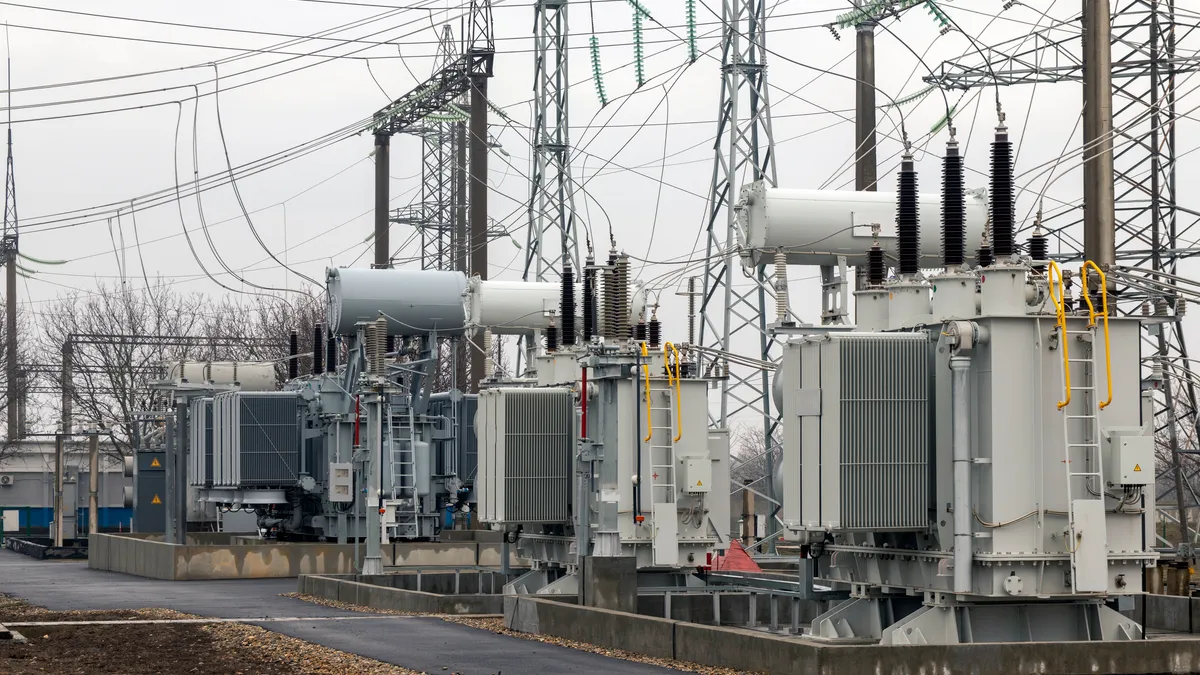The customer movement away from California utilities to alternative electricity providers just took a giant leap ahead.
The state’s investor-owned utilities (IOUs) are concerned as the County of Los Angeles prepares to take over electricity procurement for customers of Southern California Edison (SCE) in unincorporated county areas and 82 municipalities.
When completed, Los Angeles Community Choice Energy (LACCE) will have the biggest customer base yet added to the Community Choice Aggregation (CCA) movement.
“LACCE will be the biggest CCA in the state by an order of magnitude and may be the biggest in the U.S.,” said Gary Gero, chief sustainability officer for the County of Los Angeles. “It could eventually serve a million accounts.”
California’s CCA movement has eight operational members representing 1.25 million customers and a projected 2017 load of over 13,750 GWh. Eight more members, including LACCE, are expected to launch this year and more than 20 groups are exploring the concept.
California Assembly Bill 117 of 2002 established CCAs, allowing “customers to aggregate their electrical loads as members of their local community.” The aggregation is done by municipal or county governments. As an alternative to incumbent IOUs, they purchase electricity in wholesale markets and sell to residents and businesses at competitive rates.
Since then, dissatisfied utility customers across the state have turned to CCAs as an option for more local control over their power mix and prices. California’s IOUs, however, argue the CCAs’ cleaner, cheaper generation portfolios unfairly impose costs on customers who do not change electricity providers.
CCA advocates, meanwhile, say that utility stranded costs are the real issue. The debate is coming to a head at the California Public Utilities Commission (CPUC) as the state's investor-owned utilities push regulators to change the rules for departing load compensation.
Dawn Weisz, CEO of the CCA Marin Clean Energy, wants an evidence-based, stakeholder process at the California Public Utilities Commission (CPUC) to decide this debate. Weisz, who helped start the CCA movement as an Marin co-founder, says all customers must be treated fairly.
“The methodology to calculate the costs of stranded IOU resources must minimize volumes and maximize value," she said.
LA County and the CCA movement
Los Angeles County has an average annual energy load of at least 3,000 MW and a 7,000 MW peak load that LACCE aspires to serve, according to a county-commissioned feasibility report written by EES Consulting.
LACCE will supply power and behind-the-meter services while the incumbent IOU, SCE, continues to provide transmission, distribution, billing and customer services.
As dictated by the enabling law, all customers in unincorporated LA County and those customers served by municipal utilities who signed on to the LACCE Joint Powers Agreement (JPA) are part of LACCE unless they opt-out. EES estimated them to be over 30% of SCE’s retail load.
LACCE will expand its service to customers in three phases, according to the feasibility study.
“Phase 1, scheduled to begin in January, is just our 2,000 county accounts in the unincorporated areas,” Gero said. “Around mid-July of next year, we’ll roll service out to about a quarter million commercial and residential customers in unincorporated areas.”
Service will then be extended to the County’s participating municipalities and 1.1 million potential customers in the County in Phase 3. When complete, LACCE is could have retail sales of over 3,800 GWh, and annual revenues of an estimated $180 million.
That would surpass the customer and revenue bases of existing CCAs like Marin, Sonoma Clean Power (SCP) and Peninsula Clean Energy, according to numbers from advocacy group Local Power.
To evaluate expected rates and power mixes for LACCE, EES looked at a 20-year forecast of LACCE loads, customers, and resource options. Major operational and regulatory risks are “manageable” as LACCE moves to higher levels of renewables from SCE’s current 28%, EES concluded.
“No reasonable set of circumstances will result in LACCE’s rates being higher than SCE’s for comparable products,” the analysis found.
LACCE could provide a residential rate of $0.162/kWh for a 28% renewables mix — 5.4% below SCE’s current $0.171/kWh for that portfolio.
A mix of 50% renewables has a projected rate of $0.164/kWh — 4.1% less than SCE’s current rate. The projected 100% renewables rate is $0.182/kWh, only 6.3% above SCE’s current rate and 12% lower than SCE’s estimated rate for its 100% renewables offering.
One of the main reasons CCAs can provide more renewables at lower prices is because the prices for renewables and natural gas are falling, Gero said. The prices for natural gas are at historic lows and renewables are half what they were a year ago.
“That favors new entrants over existing utilities with contracts at much higher prices, he said.
Marin Clean Energy's Weisz offered an alternative explanation.
“The CCA rate tends to be lower because none of the money goes to shareholders. CCAs focus on buying power at prices that make them competitive,” she said. “That conservative mentality has resulted in lower costs for customers.”
EES also found LACCE can deliver more renewables sooner. California’s mandate requires SCE to be at 33% renewables by 2020. LACEE intends to open its 50% renewables offering this year. It also plans a package of incentives to grow distributed energy resources (DER).
Costs & cooperation
The load shedding that comes from DER will allow the CCA to answer the “$10,000 question for the entire utility industry,” said Gero — whether a utility can keep a diversified, distributed power mix affordable.
The county's 1.1 million-resident rate base will allow economies of scale “even if we’re aggressive on distributed resources," he said.
LACCE has no written policy against procurement of coal and nuclear power, but Gero expects guidance to be included in the board’s direction to its soon-to-be-hired procurement specialist.
The LACCE emphasis on local control is expected to deliver $20 million per year in bill savings at the completion of Phase 3. That is expected to create over 200 jobs and over $9.6 million in labor income county-wide. The emphasis on local renewables could produce hundreds of millions of dollars more in economic benefits as well as major emissions reductions.
SCE's cooperation with the CCA is important because it will continue to send out customer bills with LACCE energy charges and SCE energy delivery charges. Gero sees three reasons why SCE has been and will continue to be cooperative.
First, the enabling law prevents IOUs from obstructing CCAs. Second, California regulation makes energy costs “pass-through” charges on which IOUs cannot profit, he said, so the utility isn't losing out by not providing hte power.
But more importantly, “SCE sees the role of the utility of the future as a utility services provider, not a power provider,” he said.
The key question for LACCE is the one every load serving entity faces, Gero said. “How do you design an affordable portfolio that assures you keep the lights on 24-7? That’s sophisticated work and the IOUs have been doing this for a while so they know how.”
Before LACCE can address that question, however, it must face the utilities’ question of how to value departing load.
IOU ideas about departing load
As LACCE announced it was moving ahead, California’s IOUs filed a Joint Utilities (JU) Application with the CPUC proposing a new approach to departing load.
The Portfolio Allocation Methodology (PAM), they argue, more “fairly” allocates utility resource portfolios between customers who stay with their utilities and those who depart than the current methodology, the Power Charge Indifference Adjustment (PCIA).
The JU Application was filed following a six-month, CPUC-ordered working group process, according to Christy Ihrig, Communications Director for San Diego Gas & Electric (SDG&E).
The working group, led by SCE and Sonoma Clean Power, last month filed a Petition for Modification of the existing process. The commission will now either move summarily on the JU Application or open a stakeholder process in response to the petition.
PAM is “urgently needed” so that customers who move to new providers (departing load customers) do not shift costs to customers who stay with their utilities (bundled service customers), according to the JU filing. This will “ensure equal treatment for all customers” and “the long-term viability of customer choice programs in California.”
Because utilities are not financially impacted when customers move to CCAs, it is only bundled service customers who face the higher costs imposed by departing load customers, the filing argues. This is a violation of “the "fundamental principle" of "indifference" in ratemaking affirmed by the CPUC and the legislature.
PCIA, the current methodology, is “fundamentally broken,” the JU filing argues. It “has proved to be controversial, litigious, and fails to achieve the Legislature’s requirement."
PCIA is based on “administratively-determined estimates of hypothetical future market prices” for utility generation rather than “actual costs,” the utilities argue. This must now be rectified because the cost shift “will substantially increase as departing load increases.”
PAM would incorporate “actual costs and benefits and a true-up process,” the filing reports. It is “transparent, objective, and fully consistent with California law” and should be “expeditiously adopted.”
Caroline Choi, vice president for reguatory affairs at SCE, said CCAs and IOUs “are not in competition for customers.”
But, she added, a periodic adjustment of the costs and benefits of departing load is necessary “as the cost of power in the market changes.”
Pacific Gas and Electric (PG&E) Spokesperson Donald Cutler said the IOUs older long-term power PPAs are likely at higher prices than the contracts CCAs are now signing. Under the PCIA, bundled service customers would therefore pay more for renewables than departing load customers.
Based on calculations using actual market prices, CCA customers currently pay about 65% of the costs for the renewables procured for them as PG&E customers, the utility reported. That will cost bundled service customers a projected $180 million in 2017, which could grow to $500 million in 2020.
“The $180 million is everything PG&E will not collect in 2017 from customers who have moved to third party providers so far,” Cutler said. “The $500 million is a projection of what it will not collect in 2020 if projections of CCA growth do not change.”
SDG&E’s Ihrig said that under PAM, each departing load customer would continue to be charged for renewables and other generation that were procured for that customer by the incumbent utility.
“The energy purchased for a departing customer goes with that customer for the duration of the contracts,” she said. “If the new provider supplies more renewables, it would have to charge for that. When the incumbent utility’s contracts expire, the customer pays for energy procured by the new provider.”
CCA ideas about departing load
CalCCA, the CCA trade association, has sketched out alternatives to the PAM and the PCIA. It wants the commission to encourage more prudent procurement and portfolio management by IOUs.
More importantly, said Marin's Weisz, the methodology used to value departing load should reflect all short and long-term value streams of the existing contracts.
“Things like the hedge value of a contract should be considered,” she said. “The resources have more value than just the spot market price.”
Other options for achieving indifference would be financial mechanisms that allow the IOUs to sell assets stranded by departing load, the association suggested. There may be financial mechanisms that give IOUs adequate cost recovery without imposing undue burdens on CCAs.
Most importantly, the IOUs must be more transparent, CalCCA argued. CCA advocates should not have to bargain for “user-friendly access to contract data."
“We do not want the utilities’ arguments to be shortchanged but there needs to be a commission proceeding with more discovery and transparency,” Weisz said. “That’s the best way to determine how to minimize costs.”
The CCAs support a proposal in the JU Application for commission-approved disclosure of data, she said. “That is a positive. But we would like them to disclose more information today.”
LACCE’s Gero said the CCAs need to know more about what energy the IOUs have and what they are selling it for before departing load charges can be negotiated. “We can’t speculate. We need to have that information.”
PG&E’s Cutler said the JU filing is a “first step” toward resolving the issue. Moving forward, the CPUC plans to review the proposals for changes to PCIA that came from the joint working group.
"The CPUC will endeavor to establish a proceeding process where all parties feel heard," said spokesperson Terrie Prosper. "This process could include opening a new proceeding on our own motion if parties feel the utility application is too narrow or eliminates alternative approaches from being considered."
The CPUC and California Energy Commission are also set to scrutinize the future of retail energy choice, including CCAs, in a special en banc hearing scheduled for May 19.






















